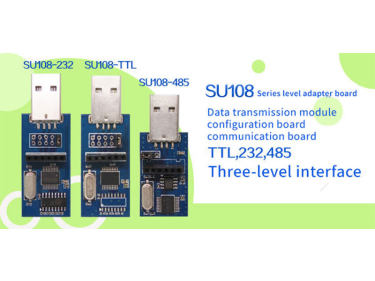What is LoRaWAN Gateway?
The LoRaWAN gateway is a core hardware component in the LoRaWAN IoT architecture through which data can be collected from devices and forwarded to a network server. It can be said that there is no LoRaWAN IoT network without a LoRaWAN gateway.
(LoRaWAN IoT Architecture)
LoRaWAN gateway composition:
In terms of construction, a LoRaWAN gateway is mainly composed of two components: the host and the concentrator.
The first component, called the host, is the brain of the LoRaWAN gateway. It is actually a microcomputer, which is responsible for controlling the concentrator to realize the wireless transceiver function and forwarding the data packets to the network server. The key software running in the host is called the packet forwarder and it decides which web server will accept the packets collected by the LoRaWAN gateway.
The second component is the concentrator. It is the RF (radio frequency) part of the LoRaWAN gateway, and has an RF chip in its front-end part, which can receive data at the same time. There is a digital baseband chip on the concentrator that performs digital signal processing on the RF signal to make it meaningful to the host. The host and concentrator of the LoRaWAN gateway communicate over serial at the board level.
In addition to the concentrator and host, every LoRaWAN gateway needs one very important thing, the enclosure. The shell protects the gateway from surrounding environment variables. The enclosure will vary depending on the intended use environment, eg, an indoor gateway uses a compact enclosure. Outdoor gateways, on the other hand, use more rugged, durable and waterproof enclosures.

(NiceRF LoRaWAN Gateway)
Frequency of LoRaWAN Gateways
Like other gateways, LoRaWAN gateways also need to work on a specified operating frequency. When deploying gateways in specific countries, the LoRa Alliance regional parameters must be followed. However, there is no universal frequency, and each country has different laws regarding the use of unlicensed MHz bands. For example, the LoRaWAN frequency band in China is CN470 (470-510MHz), while those in Europe and the United States are EU868 (863-870MHz) and US915 (902-928MHz) respectively. Each country has its specific channel. For details, you can refer to the regional parameter file of the LoRa Alliance.
By the way, LoRaWAN gateways and devices must be on the same frequency schedule to work. If the LoRaWAN device uses a different frequency plan than the LoRaWAN gateway, the device will not be visible to the gateway. In this case, the LoRaWAN gateway has no way to forward the device data to the network server.

(LoRaWAN gateway operation block diagram)
LoRaWAN gateways are deployed online or offline
Depending on the requirements and constraints of the IoT application, LoRaWAN gateways can be deployed online or offline. For an online gateway, it needs to have a backhaul network to connect to the Internet, and its communication backhaul can be WiFi, Ethernet, cellular, etc. The gateways connected online mainly use LoRaWAN network servers deployed in the cloud, these servers mainly include The Things Stack, Tencent Cloud IoT platform and AWS IoT Core for LoRaWAN, etc. When the LoRaWAN gateway is deployed offline, it can utilize the built-in web server of the LoRaWAN gateway itself, or connect to a web server deployed locally on a PC or server. One of its mainstream web servers for local networks is Chirpstack. In this case, regardless of whether the gateway is online or offline, it must register with the LoRaWAN web server and then set the packet forwarder appropriately.
The LoRaWAN gateway looks complicated, but in fact it is just a "middleman" between the device and the network server. Its first job is to receive packets by choosing the appropriate frequency plan, which of course matches the needs of the equipment in the region where it is deployed. The second job is to correctly forward the data to the web server, during which the LoRaWAN gateway is registered with the packet forwarder. With these fully configured, it is possible to have a working LoRaWAN gateway in no time.
 +86-755-23080616
+86-755-23080616
 sales@nicerf.com
sales@nicerf.com
Website: https://www.nicerf.com/
Address: 309-314, 3/F, Bldg A, Hongdu business building, Zone 43, Baoan Dist, Shenzhen, China






